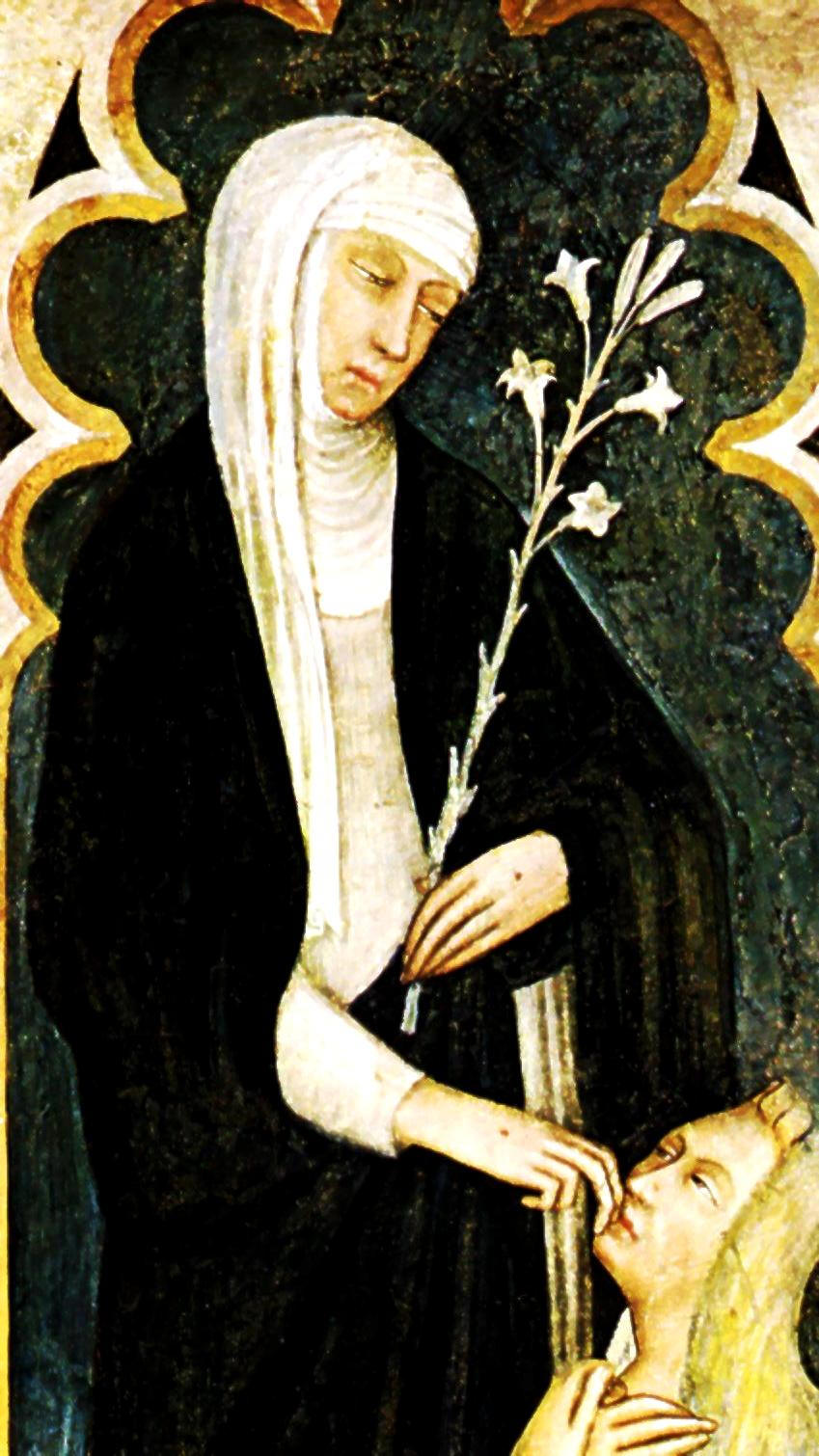

The famous fresco of Catherine of Siena by Andrea di Vanni, one of her many disciples. Vanni, besides being a well-known painter, was also a politician. According to tradition, he painted the fresco on one of the pillars in the Capella delle Volte ("Chapel of the Veils"), where Catherine and the other Mantellate prayed, in the church of San Domenico in Siena. Later, the fresco was placed above the altar in the same chapel where it can be seen today. The fresco shows a young devotee kissing the saint's hand. Fra Bartolomeo Dominici, OP, a follower of Catherine, relates that when she went to Pisa she was treated with such reverence by the people who, when approaching her, would kneel and kiss her hands. Being a witness to this, Fra Bartolomeo suggested to Catherine that she stop people from doing this because it might lead her into vainglory. She replied: "I hardly notice what they do, and, through God's grace, it does not please me; I consider only the good affection that brings them to me, and thank the Divine Goodness that thus moves them, praying that He may perfect and fulfill those desires which He has inspired. I marvel how a creature, knowing itself to be a creature, can have vainglory." (From Dominici's deposition as found in the Processo Castellano, quoted in Gardner, Saint Catherine of Siena, pp. 130-131). Catherine is pictured in her Dominican Mantellata habit holding a lilly, a Dominican symbol representing purity. Indications of the stigmata can be seen on her two hands.
According to Augusta Drane, in The History of St. Catherine of Siena and Her Companions (1899), vol. 1, p. 184: "Two likenesses exist of St. Catherine of Siena: one is the celebrated painting by Andrea di Vanni...the other is the almost equally celebrated marble bust which claims to be the work of Jacobo della Quercia, and to have been carved by him from a cast taken after her death." (For an image of the bust, return to "Images of the True Likeness of Catherine of Siena").
www.drawnbylove.com